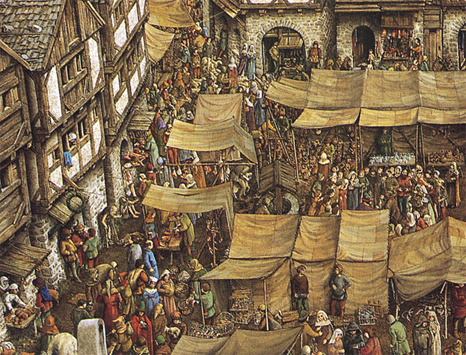
1. 중세시대의 정치적 배경과 특징
중세시대는 서양 역사에서 중요한 시기로, 5세기부터 15세기까지 지속되었습니다. 이 시기의 정치적 배경은 로마 제국의 붕괴와 그 이후의 분열, 그리고 군주제의 등장 등이 있었습니다. 중세시대의 특징으로는 군주제와 봉건제의 발전, 기사단의 등장, 성종국가의 형성 등이 있습니다. 또한, 교회의 영향력이 크게 높아졌으며, 교황의 권력도 커졌습니다. 이러한 특징들은 서양 역사의 발전과 함께 중세시대를 형성하게 된 것입니다.
2. 중세시대 유럽의 국가와 왕권
중세시대 유럽에서 국가와 왕권은 서로 밀접한 관계를 가졌다. 이 시대에는 국가 개념이 아직 발전하지 않았기 때문에 왕과 국가는 거의 동의어로 사용되었다. 왕은 국가를 대표하며, 국가의 권력을 행사하였다. 이러한 왕의 권력은 종족과 지역에 따라 다르게 나타났다. 예를 들어, 프랑스의 왕은 중세시대에 강력한 권력을 가졌지만, 독일의 왕은 권력이 분산되어 있었다. 이러한 권력 분산은 국가의 통일을 어렵게 만들었다.
3. 중세시대 동양의 국가와 정치체제
중세시대 동양에서는 여러 국가들이 존재했으며, 그들은 각자의 정치체제를 가지고 있었다. 중국은 왕조제를, 일본은 군사정권을, 조선은 왕권 중심의 군주제를, 그리고 몽골은 칸국을 중심으로 한 제국주의를 채택했다. 이러한 다양한 정치체제는 각각의 국가에서 발전하게 된 역사와 문화의 특징을 반영하고 있다.
4. 중세시대의 국제정치와 군사력
중세시대는 국제정치와 군사력이 밀접하게 연관되어 있었다. 다양한 국가와 종교 사이의 갈등과 협력이 이루어졌으며, 이를 위해 군사력이 중요한 역할을 했다. 군사력은 국가의 안보와 영토 확장을 위해 필수적이었고, 이를 위해 다양한 전술과 무기가 개발되었다. 또한, 국제정치에서는 왕족들이 서로 결혼을 통해 연합을 이루거나, 동맹을 맺는 등 다양한 방법으로 관계를 유지하고 있었다. 중세시대의 국제정치와 군사력은 현재의 세계정치와 군사력에도 큰 영향을 미치고 있다.
5. 중세시대 정치가 현대 정치에 미치는 영향
중세시대 정치가 현대 정치에 미치는 영향은 매우 크다. 중세시대의 국가들은 왕권 중심의 국가였으며, 이러한 국가 체제는 현대의 대부분의 국가에서도 유지되고 있다. 중세시대의 국가들은 또한 군사적으로 강력했으며, 이러한 군사력은 현대의 국방력에도 큰 영향을 미치고 있다. 또한 중세시대의 종교적 영향력은 현대의 종교와도 밀접한 관련이 있다. 이러한 이유로 중세시대 정치는 현대 정치에 큰 영향을 미치고 있다.
#중세시대 #서양역사 #로마제국 #군주제 #봉건제 #기사단 #성종국가 #교회 #교황 #유럽 #왕권 #프랑스 #독일 #권력분산 #동양 #정치체제 #왕조제 #군사정권 #군주제 #칸국 #국제정치 #군사력 #안보 #영토확장 #왕족 #연합 #동맹 #현대정치 #왕권중심 #국방력 #종교적영향력
1. Political Background and Characteristics of the Middle Ages
The Middle Ages were an important period in Western history, lasting from the 5th to the 15th centuries. The political background of this period included the collapse of the Roman Empire, subsequent fragmentation, and the rise of the monarchy. Characteristics of the Middle Ages include the development of monarchy and feudalism, the emergence of knights, and the formation of secular states. In addition, the influence of the church was greatly increased, and so was the power of the pope. These characteristics formed the Middle Ages along with the development of Western history.
2. State and royal power in Europe in the Middle Ages
In medieval Europe, state and kingship had a close relationship. Since the concept of state had not yet developed in this era, king and state were used almost synonymously. The king represented the state and exercised state power. The power of these kings appeared differently depending on the tribe and region. For example, French kings had great power in the Middle Ages, but German kings had decentralized power. This decentralization of power made it difficult to unify the country.
3. Eastern states and political systems in the Middle Ages
In the Middle Ages, several countries existed in the Orient, and each had its own political system. China adopted a dynastic system, Japan adopted a military regime, Joseon adopted a monarchy centered on royal power, and Mongolia adopted an imperialism centered on a khan. These diverse political systems reflect the characteristics of the history and culture that have developed in each country.
4. International Politics and Military Power in the Middle Ages
In the Middle Ages, international politics and military power were closely related. Conflicts and cooperation between various countries and religions took place, for which military power played an important role. Military power was essential for national security and territorial expansion, and various tactics and weapons were developed for this purpose. In addition, in international politics, royal families maintained relationships through various means, such as forming unions through marriage or forming alliances. The international politics and military power of the Middle Ages has a great influence on the current world politics and military power.
5. The influence of medieval politics on modern politics
Medieval politics has a great influence on modern politics. States in the Middle Ages were kingdom-centered, and this state system is maintained in most modern countries. States in the Middle Ages were also militarily powerful, and this military power has a great influence on modern defense power. Also, the religious influence of the Middle Ages is closely related to modern religion. For this reason, medieval politics has a great influence on modern politics.
#Middle Ages #Western History #Roman Empire #Monarchy #Feudalism #Knights #SungjongNation #Church #Pope #Europe #Royal Authority #France #Germany #Dispersion of Power #Orient #Political System #Dynasty #Military Government #Monarchy #Khanuk #International Politics #military power #security #territorial expansion #royalty #union #alliance #modern politics #centre of kingship #defense #religious influence
1. 中世時代の政治的背景と特徴
中世時代は西洋の歴史において重要な時期であり、5世紀から15世紀まで続きました。この時期の政治的背景には、ローマ帝国の崩壊とそれ以降の分裂、そして君主制の登場などがありました。中世時代の特徴としては、君主制と封建制の発展、騎士団の登場、成宗国家の形成などがあります。また、教会の影響力が大幅に高まり、教皇の権力も大きくなりました。これらの特徴は、西洋の歴史の発展とともに中世の時代を形成することです。
2. 中世時代ヨーロッパの国家と王権
中世時代のヨーロッパでは、国家と王権は互いに密接な関係を持っていました。この時代には国家概念がまだ発展していないため、王と国家はほぼ同義語として使われていた。王は国家を代表し、国家の権力を行使した。これらの王の権力は、種族と地域によって異なります。例えば、フランスの王は中世時代に強力な権力を持っていたが、ドイツの王は権力が分散していた。このような権力分散は国家の統一を困難にした。
3. 中世時代東洋の国家と政治体制
中世時代の東洋にはいくつかの国が存在し、彼らはそれぞれの政治体制を持っていた。中国は王朝祭を、日本は軍事政権を、朝鮮は王権中心の君主制を、そしてモンゴルは関国を中心とした帝国主義を採択した。このような多様な政治体制は、各国で発展する歴史と文化の特徴を反映している。
4. 中世時代の国際政治と軍事力
中世時代は国際政治と軍事力が密接に関連していた。様々な国と宗教との間の葛藤と協力が行われ、このために軍事力が重要な役割を果たした。軍事力は国家の安全保障と領土の拡大に不可欠であり、そのために様々な戦術と武器が開発された。また、国際政治では、王族が互いに結婚を通じて連合を成し遂げたり、同盟を結ぶなど様々な方法で関係を維持していた。中世時代の国際政治と軍事力は現在の世界政治と軍事力にも大きな影響を及ぼしている。
5. 中世時代の政治が現代政治に与える影響
中世時代の政治が現代の政治に与える影響は非常に大きい。中世時代の国家は王権中心の国家であり、このような国家体制は現代のほとんどの国家でも維持されている。中世時代の国々も軍事的に強力であり、このような軍事力は現代の国防力にも大きな影響を及ぼしている。また、中世時代の宗教的影響力は現代の宗教とも密接な関係がある。このため、中世時代の政治は現代の政治に大きな影響を与えている。
#中世時代#西洋歴史#ローマ帝国#君主制#封建祭#騎士団#聖宗国家#教会#教皇#ヨーロッパ#王権#フランス#ドイツ#権力分散#東洋#政治体制#王朝祭政治#軍事力#安全保障#領土拡張#王族#連合#同盟#現代政治#王権中心#国防力#宗教的影響力



'잡학다식' 카테고리의 다른 글
| 마그네슘 합금이란 (0) | 2023.04.08 |
|---|---|
| 알츠하이머 뇌질환의 정의와 원인 (0) | 2023.04.07 |
| 비타민C와 식이섬유의 중요성 (0) | 2023.04.05 |
| 아즈텍 종교란 무엇인가 (0) | 2023.04.04 |
| 런던의 대표적인 스포츠 종목 소개 (0) | 2023.04.03 |



